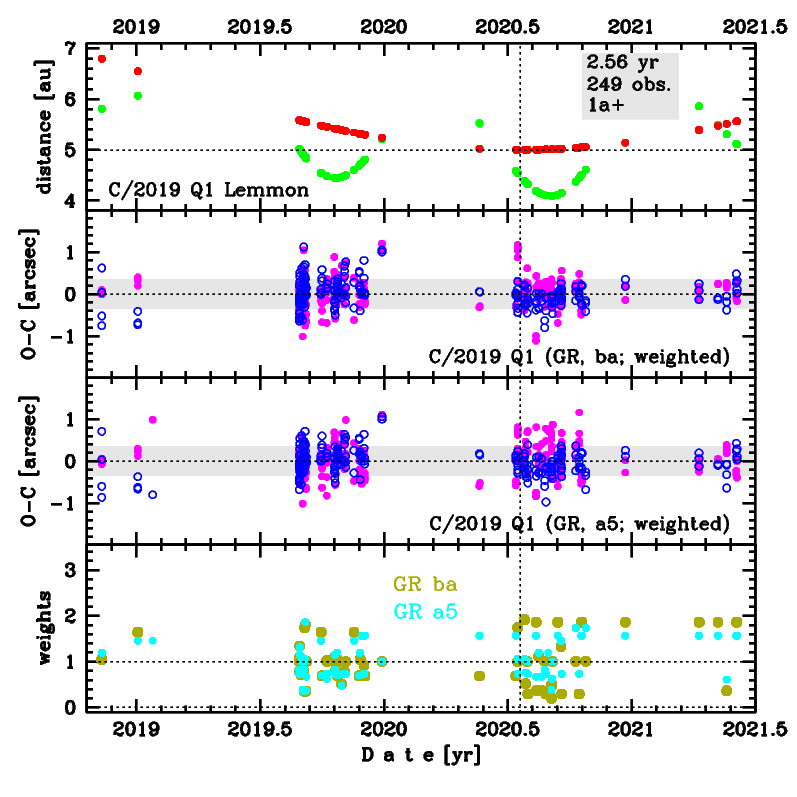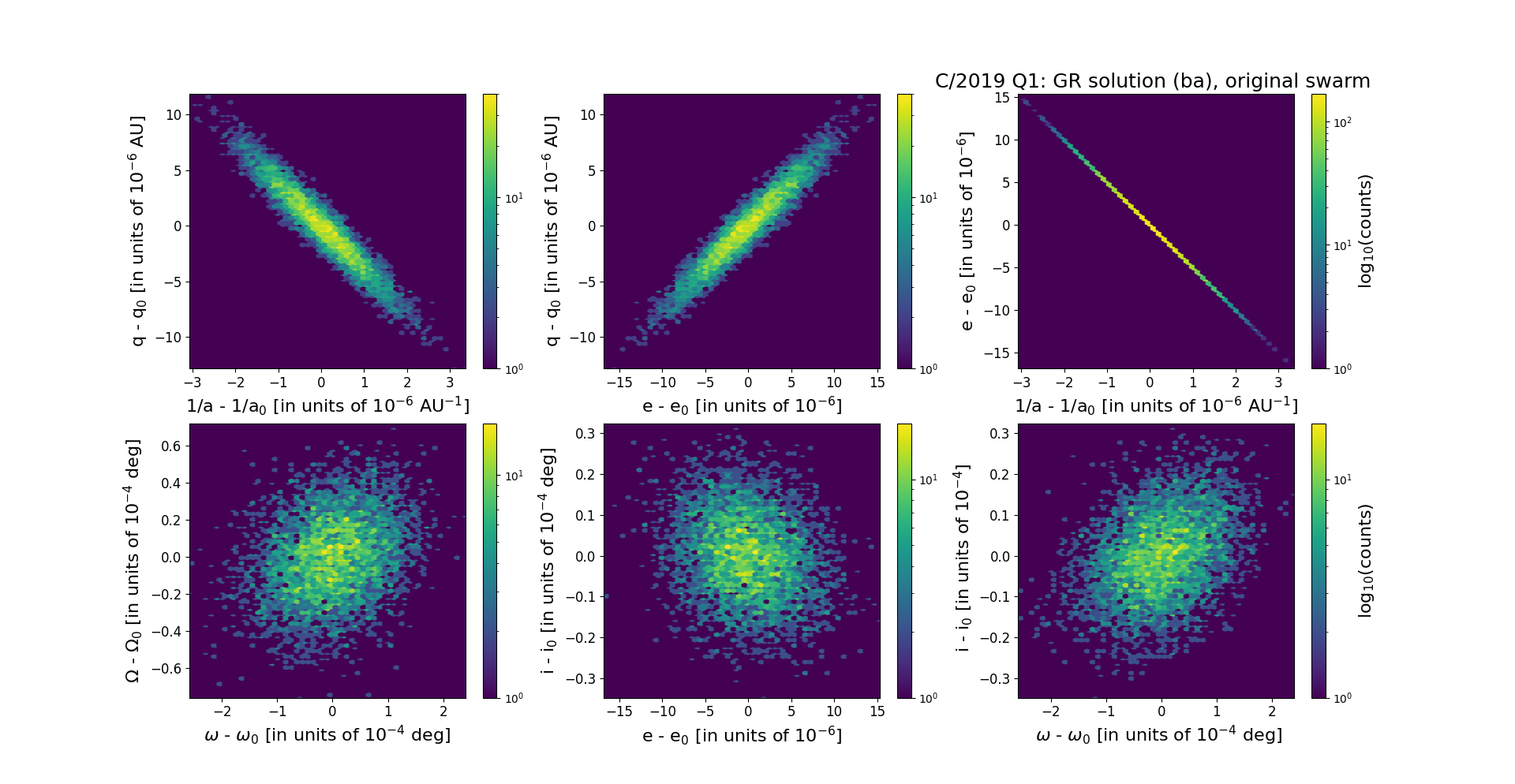C/2019 Q1 Lemmon
more info
Comet C/2019 Q1 was discovered on 28 August 2019, almost one year before its perihelion passage. Later two series of pre-discovery observations were found from 2 January 2019 and 10 November 2018. This comet was observed until 4 June 2021.
Comet had its closest approach to the Earth on 3 September 2020 (4.09 au); 1.5 month after its perihelion passage.
Solutions (GR and NG) given here are based on data span over 2.56 yr in a range of heliocentric distances: 6.80 au – 5.00 au (perihelion) – 5.56 au. Orbits based on pre-perihelion and post-perihelion data independently were also obtained.
This Oort spike comet suffers small planetary perturbations during its passage through the planetary system; however, they lead to escape this comet from the solar system on hyperbolic orbit (see future barycentric orbits).
Comet had its closest approach to the Earth on 3 September 2020 (4.09 au); 1.5 month after its perihelion passage.
Solutions (GR and NG) given here are based on data span over 2.56 yr in a range of heliocentric distances: 6.80 au – 5.00 au (perihelion) – 5.56 au. Orbits based on pre-perihelion and post-perihelion data independently were also obtained.
This Oort spike comet suffers small planetary perturbations during its passage through the planetary system; however, they lead to escape this comet from the solar system on hyperbolic orbit (see future barycentric orbits).
| solution description | ||
|---|---|---|
| number of observations | 247 | |
| data interval | 2018 11 10 – 2021 06 04 | |
| data type | perihelion within the observation arc (FULL) | |
| data arc selection | entire data set (STD) | |
| range of heliocentric distances | 6.8 au – 5.00 au (perihelion) – 5.56 au | |
| detectability of NG effects in the comet's motion | comet with determinable NG~orbit | |
| type of model of motion | GR - gravitational orbit | |
| data weighting | YES | |
| number of residuals | 480 | |
| RMS [arcseconds] | 0.35 | |
| orbit quality class | 1a+ | |
| orbital elements (barycentric ecliptic J2000) | ||
|---|---|---|
| Epoch | 1714 12 22 | |
| perihelion date | 2020 07 21.55882091 | ± 0.00057433 |
| perihelion distance [au] | 4.99259696 | ± 0.00000340 |
| eccentricity | 0.99982756 | ± 0.00000429 |
| argument of perihelion [°] | 56.098041 | ± 0.000069 |
| ascending node [°] | 42.372393 | ± 0.000021 |
| inclination [°] | 155.704216 | ± 0.00001 |
| reciprocal semi-major axis [10-6 au-1] | 34.54 | ± 0.86 |
| file containing 5001 VCs swarm |
|---|
| 2019q1ba.bmi |

Upper panel: Time distribution of positional observations with corresponding heliocentric (red curve) and geocentric (green curve) distance at which they were taken. The horizontal dotted line shows the perihelion distance for a given comet whereas vertical dotted line — the moment of perihelion passage.
Middle panel(s): O-C diagram for a given solution (sometimes in comparison to another solution available in CODE), where residuals in right ascension are shown using magenta dots and in declination by blue open circles.
Lowest panel: Relative weights for a given data set(s).
Middle panel(s): O-C diagram for a given solution (sometimes in comparison to another solution available in CODE), where residuals in right ascension are shown using magenta dots and in declination by blue open circles.
Lowest panel: Relative weights for a given data set(s).
